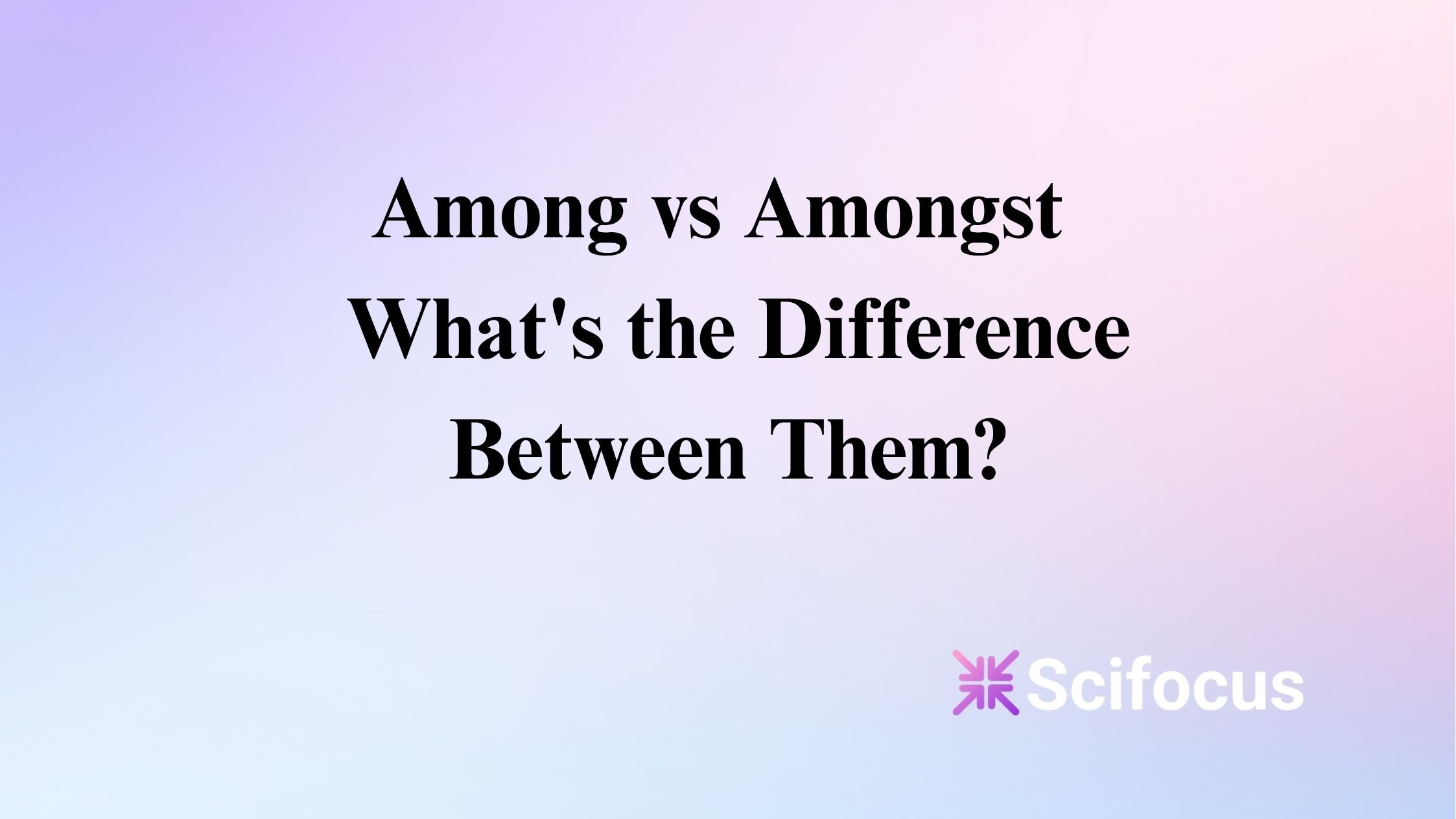Among vs Amongst - What's the Difference Between Them?

In short, among and amongst mean the same thing and can often be used interchangeably without changing the sentence’s meaning.
The main difference lies in usage and style: among is far more common in modern English, especially in American English, while amongst tends to appear in more formal, literary, or British English contexts. Meanwhile, amidst is similar but slightly different, typically emphasizing being surrounded by something, often used with physical or metaphorical settings like “amidst the chaos” or “amidst the trees.” To better understand this, let’s explore examples and contextual usage of these terms.
When it comes to the subtle distinctions in English vocabulary, among vs amongst is a classic example that often confuses learners and even native speakers alike. Both words serve the same basic function: they are prepositions used to describe something happening in the middle of or surrounded by a group of people or things.
What is the Difference Between Among, Amongst, and Amidst?
To grasp the distinctions between among vs amongst vs amidst, it’s helpful to look at their definitions and typical usage patterns.
- Among: This is the most commonly used form in everyday English. It means “in the middle of” or “surrounded by,” and it connects a subject to a collective group or category. For example: She found her lost ring among the fallen leaves.
- Amongst: This is essentially a more traditional or poetic variant of among. It is less frequently used today and is often favored in British English or formal writing. For example: He was respected amongst his peers for his dedication.
- Amidst: This preposition has a slightly different shade of meaning. While it also means “in the middle of,” it often conveys being surrounded by something less tangible, like emotions, situations, or natural elements. It is synonymous with amid. For example: Amidst the confusion, she remained calm.
Among vs Amongst Examples
Here are some practical among vs amongst examples that illustrate how these words work in sentences:
- The secret was shared among close friends.
- There was a sense of unity amongst the team members.
- The hikers wandered among the tall pine trees.
- She felt a spark of hope amongst the challenges she faced.
Notice how among is straightforward and common in daily conversation, whereas amongst adds a slightly more formal or literary tone.
When to Use Among vs Amongst in Writing?
If you want your writing to be clear and modern, especially for an international or American audience, it’s better to stick with among. It’s more direct, less formal, and universally understood. However, if you’re writing poetry, historical fiction, or aiming for a British English style, amongst can add an elegant or classical flair.
The Subtle Role of Amidst Compared to Among and Amongst
While amidst shares a similar meaning, it often describes a different kind of “surrounding” — usually more abstract or environmental rather than simply being part of a group. For example:
- He remained calm amidst the storm of accusations.
- Birds sang amidst the morning mist.
These examples show how amidst sets a scene or emotional backdrop, differing slightly from the group-oriented nature of among and amongst.
Boost Your Writing with Scifocus
To ensure your sentences using among, amongst, or amidst are error-free and polished, try out the Scifocus Grammar Checker. Our AI-powered tool helps you catch mistakes, improve clarity, and maintain consistency across your text—perfect for academic writing, blog posts, and more!
FAQs about Among vs Amongst
Can I always use among instead of amongst ?
Yes, in most cases among is perfectly acceptable and understood in both American and British English. Amongst is more formal or poetic.
Is amidstinterchangeable withamong and amongst ?
Not exactly. Amidst often implies being surrounded by an environment or mood rather than a group.
Which form is more common in academic writing?
Among is more common in modern academic writing for its clarity and simplicity.
Does using amongst make my writing sound outdated?
It can add a classical or literary tone, but overuse may seem archaic in casual contexts.
Are there regional preferences for these words?
Yes—American English favors among, while British English sometimes uses amongst more frequently.
Recommended Reading
If you enjoyed this article, check out more English usage guides on Scifocus:
- Cancelled vs Canceled: American vs British Spelling Explained
- Affection vs Effection: Understanding the Key Differences and Impacts
Happy writing with Scifocus!
Did you like this article? Explore a few more related posts.
Start Your Research Journey With Scifocus Today
Create your free Scifocus account today and take your research to the next level. Experience the difference firsthand—your journey to academic excellence starts here.
